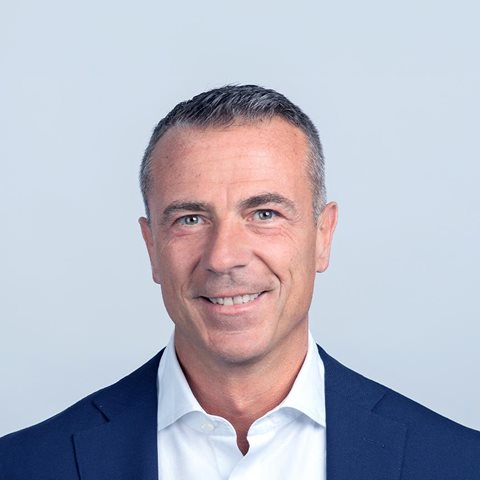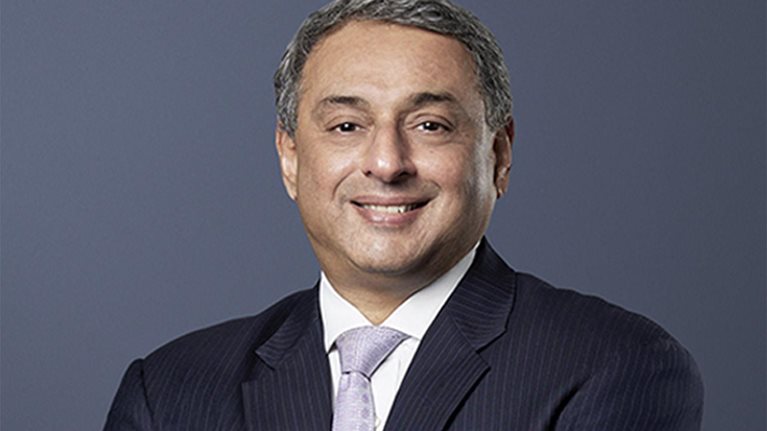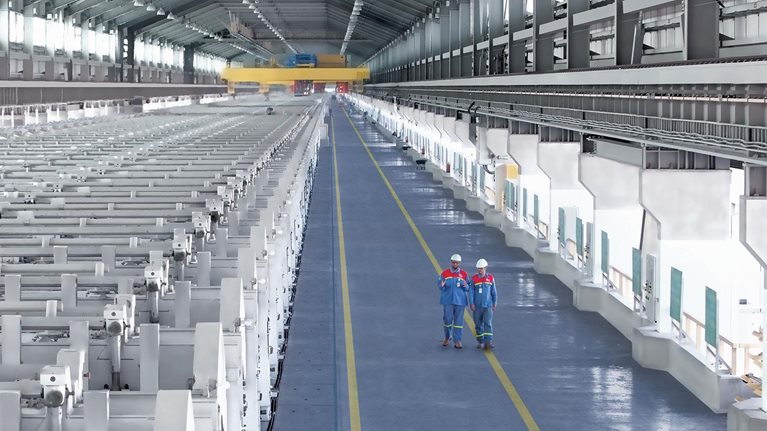Crises have a way of revealing both weaknesses and strengths. For Novelis, a global producer of flat-rolled aluminum products and one of the world’s largest recyclers of aluminum,1 crisis came in June 2024 when a flood swept through Sierre, Switzerland, one of Novelis’s largest production sites in Europe. The extreme flooding caused the company to declare force majeure—that is, the company wasn’t able to fulfill its contractual obligations due to an unforeseeable, exceptional event beyond the company’s control.
The event forced immediate operational pivots, including the launch of two workstreams responding to the crisis. “Rebuild Sierre” focused on protecting assets, cleaning up the site, acquiring replacement equipment, and restarting operations. The second workstream focused on minimizing the effect on customers through force majeure management, transparent and regular communications about supply, and a rerouting of the supply chain. According to Novelis Europe’s leaders, these efforts reshaped its long-term approach to risk management, reaffirmed its commitment to ensuring the sustainability of its operations, and reinforced its relationships with its customers and partners.
McKinsey Senior Partner Michel Van Hoey and Partner Kaushik Vedpathak sat down with Emilio Braghi, executive vice president and president of Novelis Europe, to discuss how the company navigated the Sierre flooding crisis. In the conversation, Braghi shared how the company relied on teamwork and its business ecosystem to bounce back more prepared for what’s next.
This interview has been edited for length and clarity.
McKinsey: Can you describe the Sierre crisis?
Emilio Braghi: In 2024, the Rhône in Switzerland experienced severe flooding. Novelis’s plant in Sierre, our largest in Europe, was in the flood path. We commissioned independent experts to conduct a holistic assessment of the causes and effects of the flood, and they estimated that the impact to our production was even more out of the ordinary—a once-in-three-hundred-year event. The flooding left our Sierre site inoperative, seriously disrupting our supply for customers, especially our automotive customers.2
We had to declare the flooding a force majeure toward our customers and suppliers.3 Declaring force majeure is highly unusual in our industry and indicates the degree of disaster the site was experiencing.
McKinsey: What were your priorities when facing a crisis of this scale?
Emilio Braghi: The flooding at our Sierre plant was sudden and severe, occurring over a weekend—a time when most people were off duty. Despite the timing, our immediate response was swift and clear. We had three priorities from the outset: safety, stabilizing operations, and communication.
First is safety. Our local team had already been monitoring rising river levels on Saturday afternoon, June 29. When the situation escalated overnight, we evacuated the site to keep our employees safe and executed a controlled shutdown to protect our equipment. This was especially critical in the cast house, where contact between water and molten metal could have caused catastrophic explosions. The shutdown was a major success under extremely difficult circumstances and was only possible through the vigilance of our teams on the ground.
Second is stabilizing operations. We had established playbooks that helped us create response teams, and we also have regular crisis management trainings, as most major organizations do, which helped us build a recovery plan. Still, no simulation can fully prepare you for the intensity of a real-world emergency. In moments like these, it’s not only about following a playbook, it’s also about applying judgment, adapting in real time, and reacting as quickly and decisively as possible.
Third is communication. As we dealt with the crisis, we knew that full transparency and early engagement were key. We focused on clear and open real-time communication with employees, customers, suppliers, partners, and local government leaders.
McKinsey: With these priorities to guide you, how did you and your teams address the crisis on the ground?
Emilio Braghi: This wasn’t just a logistics challenge; it was an organizational stress test. We had to make fast decisions in uncertain conditions. It took a lot of teamwork. One example was how to manage the two furnaces at Sierre: whether to rebuild, refurbish, or temporarily operate without them. These weren’t binary choices, and many of our decisions had to be made without unnecessary bureaucracy.
To manage the crisis, we needed to activate our quality, supply chain, operations, and commercial teams in parallel. I was particularly proud of how quickly our teams mobilized. Within hours, we set up regional and local crisis teams, operating out of Küsnacht—our European headquarters—and Sierre, respectively. These teams worked in close coordination to help operational teams execute on the ground.
We also empowered our local site team. A good example was the cleanup strategy. While the regional team initially suggested multiple shifts to accelerate progress, the Sierre team recommended a single long day shift, which would help them ensure consistency and close supervision. We backed their judgment and they delivered. It was a powerful lesson in listening and trusting frontline leadership.
Still, we had to overcome many challenges. Every production rerouting decision had to meet strict customer qualifications and regulatory standards, and we had to update data rapidly and work on systems across multiple plants. Luckily, our finished-goods inventory gave us a few weeks’ buffer that bought us time to reroute production across our European network and secure additional material from our Novelis operations in Asia. This was possible only because of our global footprint.
During the Sierre crisis, we also built additional rerouting capabilities. Our strategic partners supported us in implementing and institutionalizing these new core capabilities, which were critical in helping us move forward and will enable us to better manage any future crises of this nature. In addition, we resumed normal production quicker than initial estimations. We were able to gradually ramp up production in less than three months,4 significantly faster than other facilities affected by the same flooding.
McKinsey: What was it like to be at the helm of this crisis? How did it affect the people around you?
Emilio Braghi: Crises of this magnitude leave a lasting imprint on leadership. This was true for all our leaders. One of my first calls was to our local site manager—someone deeply rooted in the community and understandably shaken. My role was to provide guidance and collaborate with him in developing a plan that would enable him to lead his team effectively, make decisive choices, and uphold our responsibilities to our people and customers.
Our customers and suppliers were also part of the conversation, and there was no time for delay. On Sunday, the day after the initial crisis, I personally reached out to our largest customer at the site to inform them of the incident and reassure them of our commitment to resolving it. Our broader customer outreach began the same day. I also made sure our organization was kept informed through constant communication, including emails, town halls, and internal newsletters.
A force majeure situation is by no means standard. Dealing with this crisis required specialized expertise, and we were lucky to have strategic partners to help us navigate the situation. In fact, working with partners who could bring a clear outside-in view to help us deal with the various facets of this crisis made all the difference.
McKinsey: You mentioned that Novelis was able to recover faster than expected. What do you think set your company up to make such a fast recovery?
Emilio Braghi: In any kind of crisis, it’s important to view the situation as a learning opportunity. Over the past few years, we faced a series of compounding crises that affected our business in Europe: the COVID-19 pandemic, the energy shock, and the war in Ukraine. Each one tested our ability to adapt. In response, we took actions such as flexing capacity to match variable demand and making remote work more possible and effective.
In many ways, those experiences also served as a form of live training on how to collaborate under pressure. The flooding in Sierre took it to an entirely new and different level, requiring an even faster and more integrated response.
For instance, during this crisis, a time of extreme uncertainty, our team developed a tracking system that allowed us to map forward-looking supply visibility across all customers and sites. This visibility proved to be business-critical for us and our customers.
McKinsey: Looking back, are there any structural or cultural shifts that have endured or ways of working that have fundamentally changed because of this experience?
Emilio Braghi: The Sierre crisis tested—but also revealed—our resilience. It deepened trust in our business ecosystem in tangible ways. We demonstrated our commitment to our employees, customers, suppliers, and partners, and they supported us throughout the recovery process. I would say that it is an important lesson for any leader—you can use a crisis as an opportunity to deepen your ties to your network.
Structurally, one of the most significant outcomes has been to our business continuity planning. What we’ve put in place since the crisis, particularly around rerouting capabilities, goes well beyond conventional backup plans or alternative sourcing strategies. It marks a fundamental change in the way we operate, enhancing reliability and fostering stronger, long-term relationships with customers moving forward.
The crisis also showed how strong our talent base is. We are a matrixed organization, but those boundaries vanished during the flooding. We were ready to be flexible. There was no finger-pointing, no blame—only shared urgency and a clear focus: protect our people, protect our customers, and restart as fast and safely as possible. The culture of collaboration and ownership that emerged in those days is one of the most powerful legacies of the crisis.
McKinsey: The Sierre flooding made clear that climate risks are no longer hypothetical. Has this accelerated how Novelis Europe approaches sustainability and its role in the circular economy?
Emilio Braghi: Absolutely. The event reinforced that our 3×30 strategy,5 focused on decarbonization, emission reduction, and circularity by 2030, is not just forward-looking—it’s essential. We’ve shifted from sustainability as a goal to sustainability as a condition for business continuity. The crisis also highlighted the need for greater environmental resilience. In Sierre, we partner with local authorities to initiate structural reinforcements, including riverbed cleaning and flood mitigation measures. These efforts have already increased the site’s resilience to future extreme weather.
We are now also expanding climate risk assessments across our entire network to ensure we embed this level of preparedness into every part of our operations. So, in effect, this local crisis had a global impact, with learnings extending beyond Europe.
McKinsey: For those who may face similar crises, are there key leadership lessons you’d highlight?
Emilio Braghi: One element I would particularly emphasize is the importance of visible leadership. It may be a given, but I made it a priority to be physically present on-site first in the early aftermath and again as recovery efforts ramped up. Holding town halls with our workforce provided moments of connection and reassurance. In times of crisis, people don’t just need direction—they need to see that leadership is present, engaged, and standing with them.
Crises also reveal character. As one of my colleagues says, there’s no better test of leadership than a crisis. These moments strip away titles and expose real capability. And in our case, it was eye-opening to see who stepped up not just to perform but to lead. That shaped our approach to how we think about talent, development, and leadership going forward.
Finally, this really reinforced the importance of sustainability to us. As climate change continues, we need to accelerate our resilience efforts and our support for our partners looking for more environmentally friendly, circular solutions. Leaders need to be at the forefront of these discussions.
Ultimately, we didn’t just recover—the crisis served as a catalyst for transformation. We emerged stronger, more aligned, and more capable. That’s the legacy of Sierre.



